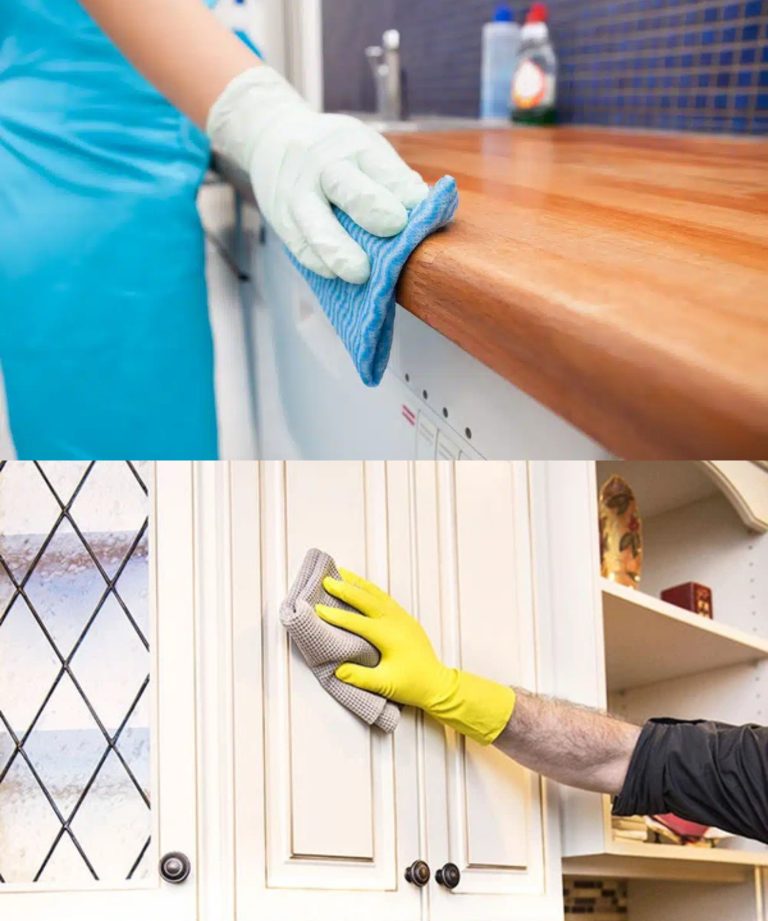ADVERTISEMENT
### 3. **Steam and Moisture**
Moisture and steam from boiling pots, pans, and cooking techniques such as simmering or baking can combine with the oils in the air, causing the grease to settle on your kitchen surfaces, including your cabinets. Over time, this constant exposure to moisture can turn the grease into a more stubborn residue.
### 4. **Lack of Regular Cleaning**
Cabinets, especially those above the stove or cooking surface, often go unnoticed during routine cleaning. While countertops, floors, and dishes are frequently wiped down, cabinets tend to accumulate grime over time, making it harder to clean later on. Without regular attention, the grease hardens and becomes more challenging to remove.
While grease buildup on cabinets is a common issue in kitchens, it doesn’t have to be an impossible task to tackle. The right cleaning solution can significantly simplify the process.
## The Magic Ingredient: What to Add to the Water
You might be wondering what this magical ingredient is that can help dissolve grease without scrubbing. The secret is none other than **dish soap** and **baking soda**, two common household items that can make a world of difference when it comes to cleaning grease. While both have their individual uses, when combined in the right proportions, they work together to break down grease and fat on kitchen cabinets.
### Dish Soap: The Grease Dissolver
Dish soap, particularly ones designed to cut through grease (like Dawn), is a powerful tool for tackling greasy messes. It works by breaking down the grease molecules, allowing them to be easily wiped away with a cloth or sponge. Dish soap is formulated with surfactants that reduce the surface tension between water and oil, effectively lifting the grease off of surfaces and into the water.
When you add dish soap to warm water, it becomes an even more effective degreasing solution. The warmth of the water helps to loosen the grease, while the dish soap works to emulsify the oils, making them easier to wipe away.
### Baking Soda: The Scrub-Free Stain Remover
Baking soda, on the other hand, is an excellent natural cleaner that has been used for generations to clean and deodorize. It’s mildly abrasive, which means it can help scrub away tough grease and grime without damaging surfaces. Baking soda is also a natural deodorizer, helping to neutralize any lingering odors from grease or food.
When added to warm water, baking soda increases the effectiveness of the dish soap, making it easier to break down grease and other sticky substances on your cabinets. Baking soda also absorbs moisture and reduces the likelihood of grease splattering during the cleaning process.
Together, dish soap and baking soda make the perfect combination for removing grease and fat from your cabinets with minimal effort. When mixed with warm water, these two ingredients can effectively dissolve grease without requiring harsh scrubbing or commercial cleaning products.
## Step-by-Step Guide: How to Clean Your Cabinets with Dish Soap and Baking Soda
Now that you know what the magical ingredients are, let’s walk through the steps for cleaning your kitchen cabinets with this simple yet effective method. This cleaning solution is not only easy to make, but it’s also eco-friendly, non-toxic, and safe for most cabinet finishes.
### Step 1: Gather Your Supplies
To get started, you’ll need the following items:
– Dish soap (preferably one designed to cut through grease)
– Baking soda
– Warm water
– A large bowl or bucket
– A soft cloth or sponge
– A microfiber cloth for drying
– A soft-bristled brush (optional for stubborn grease)
For Complete Cooking STEPS Please Head On Over To Next Page Or Open button (>) and don’t forget to SHARE with your Facebook friends
